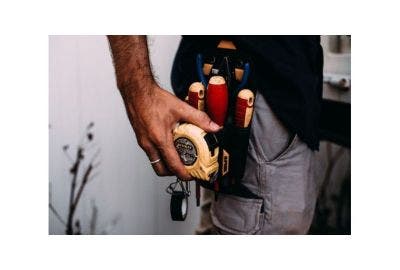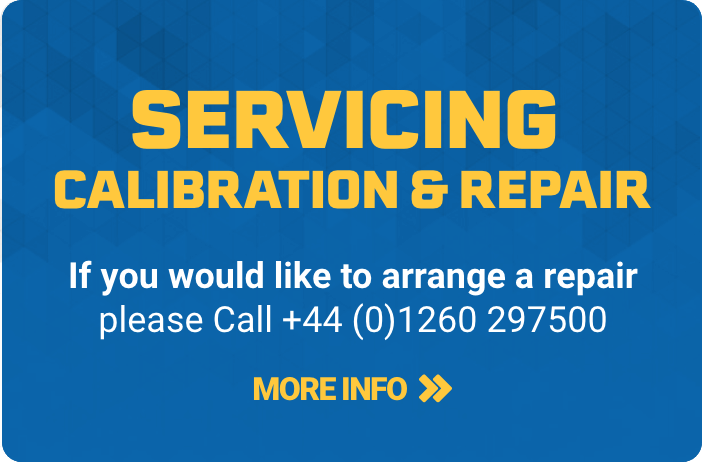Testing electrical equipment is an essential practice for ensuring safety, functionality, and compliance with industry standards. For electrical engineers, technicians, and other professionals involved in electrical maintenance, understanding the different methods and tools available for testing is crucial. This comprehensive guide will cover various types of electrical tests, the necessary equipment, best practices, safety precautions, and common issues along with troubleshooting tips.
Proper testing of electrical equipment is vital for several reasons. It helps in identifying potential faults before they become major issues, ensures the safety of users, and maintains the efficiency and reliability of electrical systems. By following the guidelines and using the right test equipment, professionals can perform these tasks effectively and safely.
Importance of Testing Electrical Equipment
Regular testing of electrical equipment is crucial for maintaining safety and functionality. Ensuring that all components operate correctly can prevent serious accidents, equipment failures, and costly downtime. For professionals in the electrical field, understanding the importance of testing can make a significant difference in their work environment and the longevity of their tools.
Safety Benefits
One of the primary reasons for testing electrical equipment is to enhance safety. Faulty electrical systems can pose significant risks, including electrical shocks, fires, and explosions. Regular testing helps identify potential hazards before they lead to accidents, protecting both the users and the equipment. Ensuring that all electrical components meet safety standards reduces the likelihood of injuries and fatalities.
Preventing Equipment Failures
Testing can prevent unexpected equipment failures by identifying issues early. Electrical equipment subjected to regular testing is less likely to experience breakdowns, leading to more reliable performance. This proactive approach helps in maintaining continuous operation and avoiding the costly consequences of sudden equipment malfunctions.
Regulatory and Compliance Requirements
Compliance with regulatory standards is another critical aspect of electrical testing. Various industry regulations mandate regular testing to ensure safety and functionality. Adhering to these standards not only avoids legal repercussions but also demonstrates a commitment to maintaining high safety and operational standards.
Financial Implications
While regular testing requires an investment of time and resources, it can lead to substantial financial savings in the long run. Preventing equipment failures reduces the need for expensive repairs or replacements. Additionally, maintaining efficient and safe operations can lower insurance premiums and avoid the financial penalties associated with non-compliance to safety regulations.
Implementing regular testing protocols ensures electrical professionals maintain safe, efficient, and compliant equipment, protecting their investments and contributing to a safer working environment.
Types of Electrical Tests
Testing electrical equipment involves various methods, each with a specific purpose and application. Understanding these tests and how to perform them correctly is essential for ensuring the safety and functionality of electrical systems.
Insulation Resistance Testing
Insulation resistance testing measures the resistance of electrical insulation to ensure it can prevent current leakage. This test is crucial in environments where electrical safety is paramount, such as industrial settings, construction sites, and residential installations. It helps identify insulation breakdowns or weaknesses, ensuring the integrity and safety of the equipment.
Common tools for insulation resistance testing include megohmmeters and insulation testers. These devices apply a voltage to the insulation and measure the resistance. High resistance values typically indicate good insulation, while low resistance values suggest potential problems. Comparing results against manufacturer specifications and industry standards is essential to determine if the equipment is safe to use.
Continuity Testing
Continuity testing verifies that a complete path exists for current to flow, ensuring circuit integrity. This type of testing is vital for identifying open circuits, broken wires, or connections that could lead to equipment failure or safety hazards.
To perform continuity testing, follow these steps:
- Ensure the circuit is de-energised.
- Connect the tester probes to both ends of the circuit.
- Observe the tester's response to confirm continuity.
- Investigate and repair any breaks or faults in the circuit.
Tools commonly used for this purpose include continuity testers, multimeters, and test lamps. These tools help ensure that circuits are complete and functioning correctly.
Earth/Ground Testing
Ground testing ensures that the electrical system's grounding is effective, providing a safe path for fault currents and preventing electrical shocks. This is critical for both safety and compliance with regulatory standards.
Several methods are used for ground testing, including the fall-of-potential test, clamp-on testing, and the stakeless method. Earth testers and ground resistance meters are essential tools for these tests. Performing ground tests with caution is necessary, especially in live environments. Proper safety gear and adherence to safety protocols are necessary to prevent accidents.
High Voltage Testing
High voltage testing assesses the insulation's ability to withstand high voltages without breaking down. It is used in applications such as cable testing, transformer testing, and other high-voltage equipment. This testing is essential for ensuring that equipment can operate safely under high voltage conditions.
There are two main types of high voltage tests:
- AC Testing: Used to simulate operational conditions.
- DC Testing: Typically used for detecting insulation defects.
High voltage test sets, including AC and DC test equipment, are used to apply the necessary voltage and measure the response. Given the dangers associated with high voltage testing, securing the area, using appropriate protective equipment, and following strict safety protocols are imperative.
Functional Testing
Functional testing verifies that electrical equipment operates correctly under normal conditions. This is essential for confirming that all components function as intended and the system performs reliably.
Common tools for functional testing include multimeters, oscilloscopes, and specific functional test devices. Results from functional testing should align with manufacturer specifications and expected performance parameters. Any deviations may indicate underlying issues that need addressing.
Essential Tools for Testing Electrical Equipment
Using the right tools is vital for accurate and effective electrical testing. Each type of test requires specific instruments designed to perform particular functions. Below is an overview of some essential tools used in electrical testing.
Multimeters
Multimeters are versatile devices that measure voltage, current, and resistance. They are essential for a wide range of electrical tests, including continuity and functional testing.
- Types: Analogue and digital multimeters
- Key Features: Auto-ranging, true RMS measurement, data logging capabilities
- Usage: Select the appropriate mode (voltage, current, or resistance), connect the probes to the circuit, and read the measurement displayed.
Insulation Testers
Insulation testers, also known as megohmmeters, are used to measure the insulation resistance of electrical components and systems. This is vital for ensuring the safety and efficiency of electrical insulation.
- Importance: Identifies potential insulation failures and weaknesses
- Types: Handheld and benchtop insulation testers
- Key Functionalities: High voltage generation, multiple test ranges, and automatic calculation of insulation resistance
Earth Testers
Earth testers are used to assess the effectiveness of an electrical system's grounding. Proper grounding is essential for safety and compliance with regulatory standards.
- Role: Ensures the grounding system provides a safe path for fault currents
- Types: Fall-of-potential testers, clamp-on testers, and stakeless testers
- Important Features: Multiple test methods, high accuracy, and ease of use
Clamp Meters
Clamp meters measure current without needing to disconnect the circuit. They are particularly useful for measuring high currents and for applications where circuit disconnection is impractical.
- Explanation: Measures current by clamping around a conductor
- Types: AC clamp meters, AC/DC clamp meters, and flexible clamp meters
- Key Functionalities: True RMS measurement, inrush current measurement, and non-contact voltage detection
At Heamar, we have a selection of clamp meters that will be perfect for undertaking any such testing.
Best Practices for Testing Electrical Equipment
Adhering to best practices ensures that electrical testing is performed accurately, safely, and efficiently. Following established guidelines and maintaining proper procedures can prevent errors and enhance the reliability of test results.
Regular Testing Schedules and Documentation
Maintaining a consistent testing schedule is essential for the ongoing safety and functionality of electrical equipment. Regular testing helps identify potential issues before they become significant problems. Detailed documentation of all tests, including the date, type of test, equipment tested, results, and any corrective actions, is crucial. This not only provides a historical record but also helps in tracking performance trends and compliance with safety standards.
Calibration and Maintenance of Testing Tools
The accuracy and reliability of testing tools are paramount. Regular calibration and maintenance of these tools ensure they provide precise measurements. Following the manufacturer’s recommendations for calibration intervals and using certified calibration services can help maintain the tools' accuracy. Additionally, regular inspections and timely replacement of worn or damaged components are necessary to keep the tools in optimal condition.
Training and Certification for Personnel
Ensuring that personnel conducting electrical tests are properly trained and certified is key to accurate and safe testing. Comprehensive training should cover the use of testing equipment, interpretation of results, and adherence to safety protocols. Certification from recognised industry bodies further ensures that personnel have the necessary skills and knowledge to perform tests effectively.
Adherence to Industry Standards and Guidelines
Following industry standards and guidelines helps maintain consistency and reliability in testing procedures. Compliance with standards set by organisations such as the International Electrotechnical Commission (IEC) and the Institute of Electrical and Electronics Engineers (IEEE) is essential. Adhering to best practice guidelines from industry experts and manufacturers ensures that testing is both safe and effective.
Safety Precautions During Testing
Safety is paramount when testing electrical equipment. Proper precautions can prevent accidents and ensure that testing is conducted without risking injury or damage.
Personal Protective Equipment (PPE) Requirements
Wearing appropriate PPE is essential to protect against electrical hazards. This includes insulated gloves, safety goggles, and flame-resistant clothing. Ensuring that all personnel involved in testing are equipped with the necessary PPE can significantly reduce the risk of injury.
Safe Handling and Usage of Testing Tools
Using testing tools correctly is crucial for safety. Always follow the manufacturer’s instructions for each tool, and ensure that tools are in good condition before use. Inspect cables, probes, and other accessories for signs of wear or damage. Avoid using tools that are damaged or malfunctioning, as they can pose significant safety risks.
Understanding and Mitigating Electrical Hazards
Electrical hazards can include shock, arc flash, and burns. Understanding these hazards and how to mitigate them is essential for safe testing. This includes de-energising circuits before testing, maintaining a safe distance from live components, and using insulated tools. Additionally, knowing the location of emergency shut-offs and first aid supplies can be critical in case of an accident.
Emergency Procedures in Case of an Accident
Having clear emergency procedures in place can save lives. Ensure all personnel are trained in these procedures, including how to respond to electrical accidents, perform CPR, and use emergency equipment. Regular drills can help reinforce these procedures and ensure everyone knows what to do in an emergency.
Common Issues and Troubleshooting
Identifying and addressing common issues through testing can prevent equipment failures and ensure reliable operation. Here are some typical electrical problems and troubleshooting steps.
Identifying Common Electrical Issues
Electrical equipment can experience various issues, including:
- Loose Connections: Can cause intermittent operation or equipment failure.
- Insulation Failure: May result in leakage currents and potential electrical shocks.
- Overheating Components: Indicate excessive current or inadequate cooling.
Step-by-Step Troubleshooting Process
- Visual Inspection: Start with a thorough visual inspection of the equipment. Look for signs of damage, overheating, or loose connections.
- Testing for Continuity: Use a multimeter to check for continuity in circuits and components. This helps identify open circuits or faulty connections.
- Insulation Resistance Testing: Measure insulation resistance to detect potential insulation failures.
- Voltage Testing: Verify that the correct voltage is present at various points in the system. This can help identify power supply issues.
- Functional Testing: Ensure all components and systems operate as intended. This helps identify any operational issues.
Tips for Diagnosing Complex Problems
Refer to Manufacturer’s Documentation: Always consult the equipment's manual for specific troubleshooting steps and parameters.
Use Detailed Test Records: Review previous test results to identify recurring issues or trends.
Isolate Components: When diagnosing complex problems, isolate individual components to narrow down the source of the issue.
When to Seek Professional Help
While many issues can be resolved through standard troubleshooting procedures, some problems require professional expertise. Seek help from qualified professionals if:
- The problem persists despite thorough troubleshooting.
- There is a risk of severe electrical hazards.
- Specialised equipment or knowledge is required to resolve the issue.
Testing electrical equipment is vital for ensuring safety, functionality, and compliance with industry standards. Through regular and thorough testing, professionals can prevent equipment failures, reduce downtime, and maintain a safe working environment.
This guide has hopefully given you an insight covering various types of electrical tests, essential tools, best practices, safety precautions, and common troubleshooting steps.
Heamar offers a comprehensive range of testing equipment and tools to support electrical professionals in their work.
From multimeters and insulation testers to earth testers and clamp meters, Heamar provides high-quality, reliable tools that meet industry standards. Explore our full range of test equipment products and find the right tools for your needs.




















